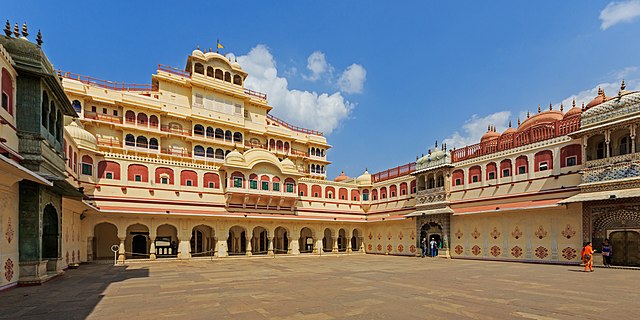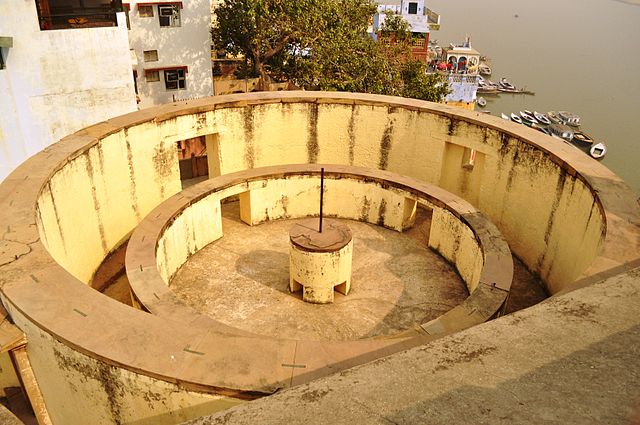Jantar Mantar is located in the modern city of New Delhi. "Jantar Mantar" means "instruments for measuring the harmony of the heavens". It consists of 13 architectural astronomy instruments. The site is one of five built by Maharaja Jai Singh II of Jaipur, from 1723 onwards, revising the calendar and astronomical tables. Jai Singh, born in 1688 into a royal Rajput family that ruled the regional kingdom, was born into an era of education that maintained a keen interest in astronomy. There is a plaque fixed on one of the structures in the Jantar Mantar observatory in New Delhi that was placed there in 1910 mistakenly dating the construction of the complex to the year 1710. Later research, though, suggests 1724 as the actual year of construction. Its height is 723 feet (220 m).
Misra Yantra at Jantar Mantar
The Jantar Mantar, ca. 1790 by Thomas Daniell
Another view by Thomas Daniell
The Jantar Mantar in 1858, damaged by fighting during the Indian Rebellion of 1857
Sawai Jai Singh II, was the 29th Kachwaha Rajput ruler of the Kingdom of Amber, who later founded the fortified city of Jaipur and made it his capital. He became the ruler of Amber at the age of 11, after the death of his father, Mirza Raja Bishan Singh, on 31 December 1699.
Sawai Jai Singh's portrait (1725) from British Museum
City Palace, Jaipur built in 1727
The observatory built by Sawai Jai Singh in Delhi
Jantar Mantar in Varanasi








